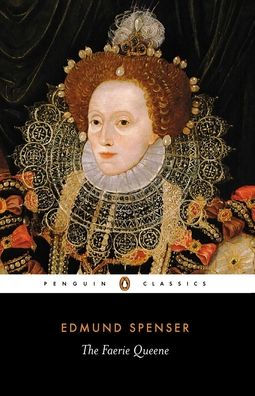‘Great Lady of the greatest Isle, whose light
Like Phoebus lampe throughout the world doth shine’
The Faerie Queene was one of the most influential poems in the English language. Dedicating his work to Elizabeth I, Spenser brilliantly united Arthurian romance and Italian renaissance epic to celebrate the glory of the Virgin Queen. Each book of the poem recounts the quest of a knight to achieve a virtue: the Red Crosse Knight of Holinesse, who must slay a dragon and free himself from the witch Duessa; Sir Guyon, Knight of Temperance, who escapes the Cave of Mammon and destroys Acrasia’s Bowre of Bliss; and the lady-knight Britomart’s search for her Sir Artegall, revealed to her in an enchanted mirror. Although composed as a moral and political allegory, The Faerie Queene’s magical atmosphere captivated the imaginations of later poets from Milton to the Victorians.
This edition includes the letter to Raleigh, in which Spenser declares his intentions for his poem, the commendatory verses by Spenser’s contemporaries and his dedicatory sonnets to the Elizabethan court, and is supplemented by a table of dates and a glossary
For more than seventy years, Penguin has been the leading publisher of classic literature in the English-speaking world. With more than 1,700 titles, Penguin Classics represents a global bookshelf of the best works throughout history and across genres and disciplines. Readers trust the series to provide authoritative texts enhanced by introductions and notes by distinguished scholars and contemporary authors, as well as up-to-date translations by award-winning translators.
‘Great Lady of the greatest Isle, whose light
Like Phoebus lampe throughout the world doth shine’
The Faerie Queene was one of the most influential poems in the English language. Dedicating his work to Elizabeth I, Spenser brilliantly united Arthurian romance and Italian renaissance epic to celebrate the glory of the Virgin Queen. Each book of the poem recounts the quest of a knight to achieve a virtue: the Red Crosse Knight of Holinesse, who must slay a dragon and free himself from the witch Duessa; Sir Guyon, Knight of Temperance, who escapes the Cave of Mammon and destroys Acrasia’s Bowre of Bliss; and the lady-knight Britomart’s search for her Sir Artegall, revealed to her in an enchanted mirror. Although composed as a moral and political allegory, The Faerie Queene’s magical atmosphere captivated the imaginations of later poets from Milton to the Victorians.
This edition includes the letter to Raleigh, in which Spenser declares his intentions for his poem, the commendatory verses by Spenser’s contemporaries and his dedicatory sonnets to the Elizabethan court, and is supplemented by a table of dates and a glossary
For more than seventy years, Penguin has been the leading publisher of classic literature in the English-speaking world. With more than 1,700 titles, Penguin Classics represents a global bookshelf of the best works throughout history and across genres and disciplines. Readers trust the series to provide authoritative texts enhanced by introductions and notes by distinguished scholars and contemporary authors, as well as up-to-date translations by award-winning translators.

The Faerie Queene
1248
The Faerie Queene
1248Paperback(Reissue)
Related collections and offers

Product Details
| ISBN-13: | 9780140422078 |
|---|---|
| Publisher: | Penguin Publishing Group |
| Publication date: | 01/25/1979 |
| Series: | Penguin Classics Series |
| Edition description: | Reissue |
| Pages: | 1248 |
| Sales rank: | 33,328 |
| Product dimensions: | 5.10(w) x 7.80(h) x 2.10(d) |
| Age Range: | 18 Years |
About the Author
Customer Reviews
Explore More Items
At first glance, Three Lives seems to be three straightforward portraits of women living in the early twentieth century. “The Good Anna” describes an exacting German house servant;
While The Iliad
A Penguin Classic
Dating to the ninth century B.C.,
